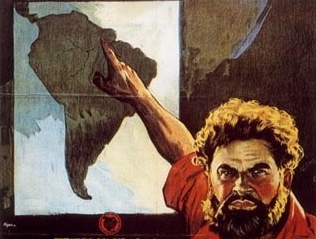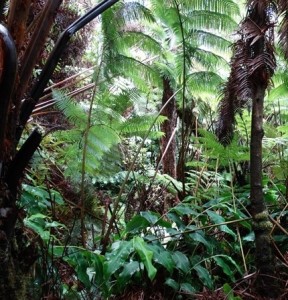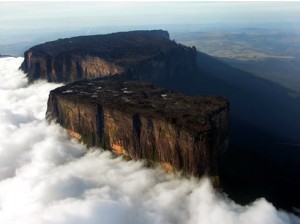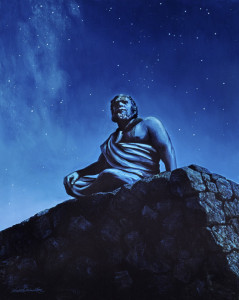 It was a dull gray landscape, and as I gradually deciphered the details of it I realized that it represented a long and enormously high line of cliffs exactly like an immense cataract seen in the distance, with a sloping, tree-clad plain in the foreground.
It was a dull gray landscape, and as I gradually deciphered the details of it I realized that it represented a long and enormously high line of cliffs exactly like an immense cataract seen in the distance, with a sloping, tree-clad plain in the foreground.
That’s George Edward Challenger describing the Amazonian plateau in Arthur Conan Doyle’s The Lost World, and it’s a description that came to mind when I got my first look at Mauna Kea — the tallest mountain in Hawaii and (arguably) in the world.
My photo above shows Mauna Kea in the foreground with Hawaii’s second tallest peak, Mauna Loa, in the distance behind it.
Towering over 13,000 feet above sea level, the peaks are nearly half as tall as Mount Everest, but if measured from the ocean floor (the true base of each of these volcanic mountains), they measure over 33,000 feet, making them the tallest mountains on the planet.
 In comparison, the real-world mountain that inspired Doyle’s The Lost World (Mount Roraima in eastern Venezuela, above right), measures a little over 9,000 feet, but the wonder of it has less to do with height than the grandeur of its vertical cliffs and the possibilities of what might lie hidden in such a remote location.
In comparison, the real-world mountain that inspired Doyle’s The Lost World (Mount Roraima in eastern Venezuela, above right), measures a little over 9,000 feet, but the wonder of it has less to do with height than the grandeur of its vertical cliffs and the possibilities of what might lie hidden in such a remote location.
In fiction, facts are the springboard for possibility.
The isolated summit of a high mountain also plays a role in my current project, the book-length expansion of the “Daughters of Prime” stories. In those stories, an exploratory mission establishes an observation post on a high cliff only to discover that the site is revered as sacred by the creatures of the valley.
Coincidentally, travel writer Brandon Wilson has informed me of an ongoing conflict between an observatory atop Mount Kea and some island residents who feel that the presence of a science installation violates the sacredness of the mountain. You can read more about that controversy here.
Once again, the road between fact and fiction runs both ways.
 This post is part three of a series of thoughts that come to mind as I sort through photographs and notes from my research trip to the Hawaiian Islands. You can find the first two posts here and here.
This post is part three of a series of thoughts that come to mind as I sort through photographs and notes from my research trip to the Hawaiian Islands. You can find the first two posts here and here.
Along the way, I’ve also been commenting on the works of Arthur Conan Doyle and the new book Professor Challenger: New Worlds, Lost Places — a book that I just happened to be reading during my travels. (Coincidence? You decide.)
For the next installment, we’ll travel through some rainforests and consider an eco-friendly way to avoid getting tangled in dense undergrowth. No machetes needed.
Until then . . . scop on!
Image Credits:
The cloud-rimmed summit of Mauna Kea.*
The cloud-rimmed summit of Mount Roraima from hdwallpapersinn.com.
Wallace Beery as Professor Challenger from a poster for The Lost World, 1925.
“Navigator on the Observatory,” Copyright © 2013 Herbert K. Kane.
The forest primeval.*
*Photos copyright © 2015 by The 21st-Century Scop.




Leave a Reply